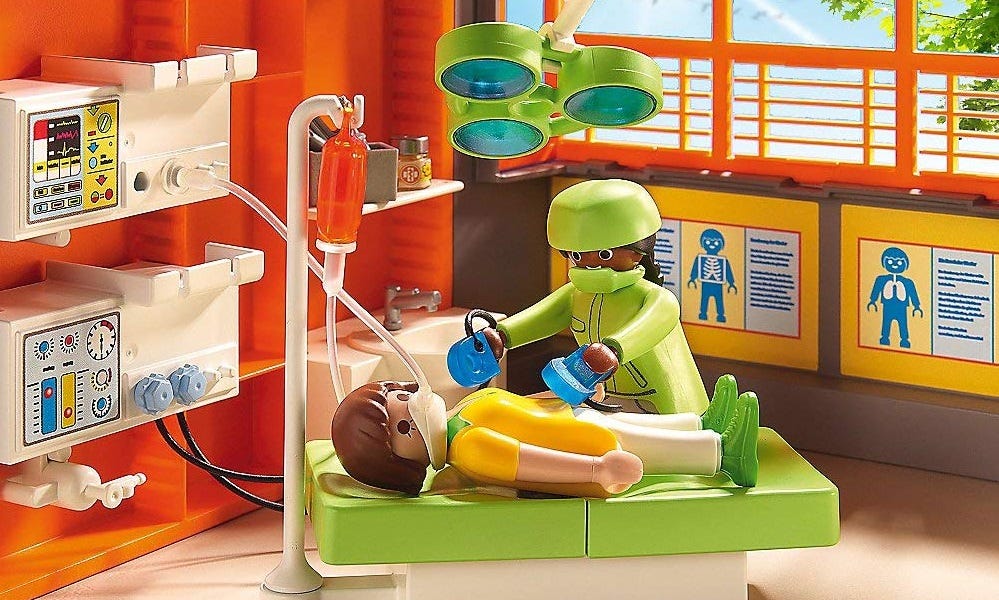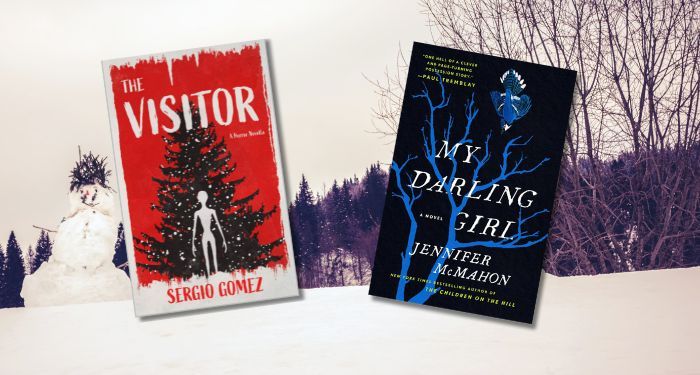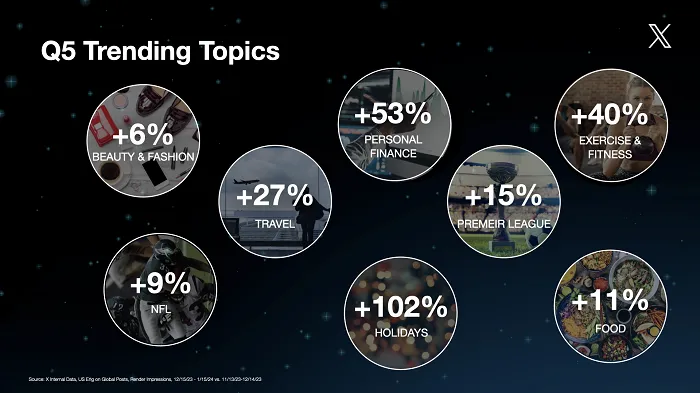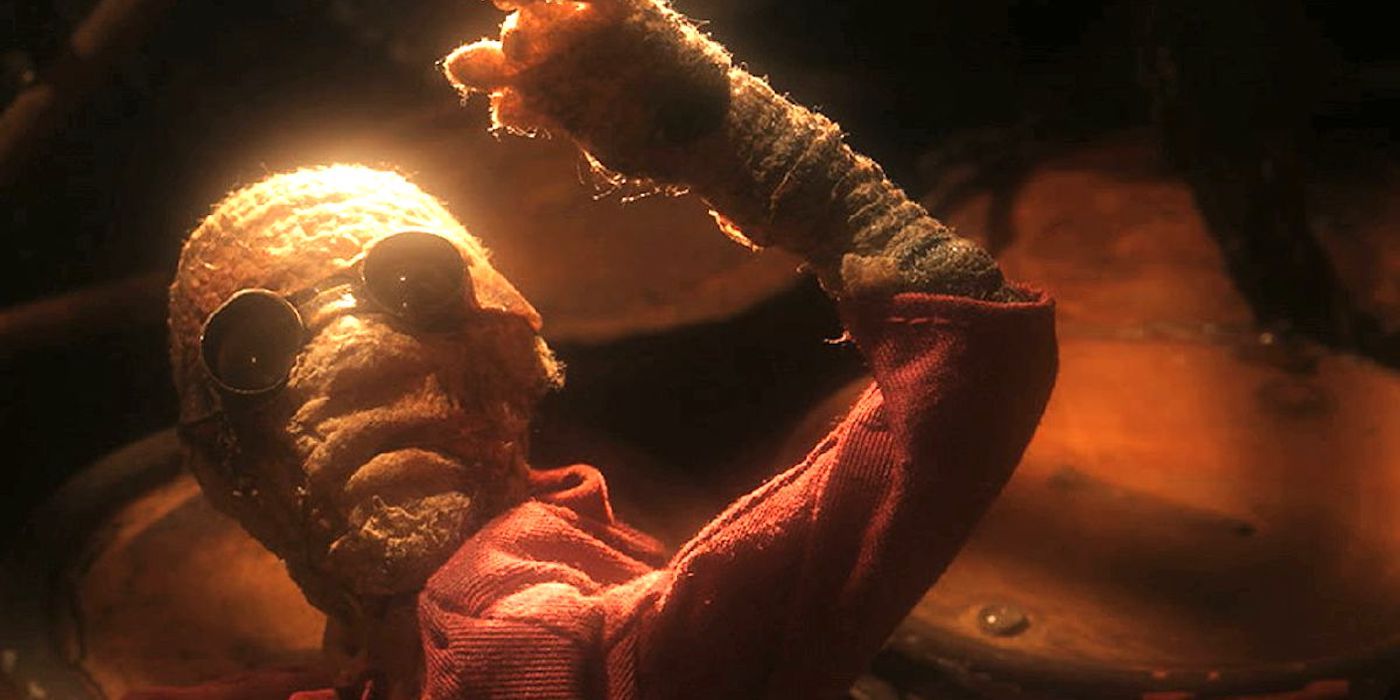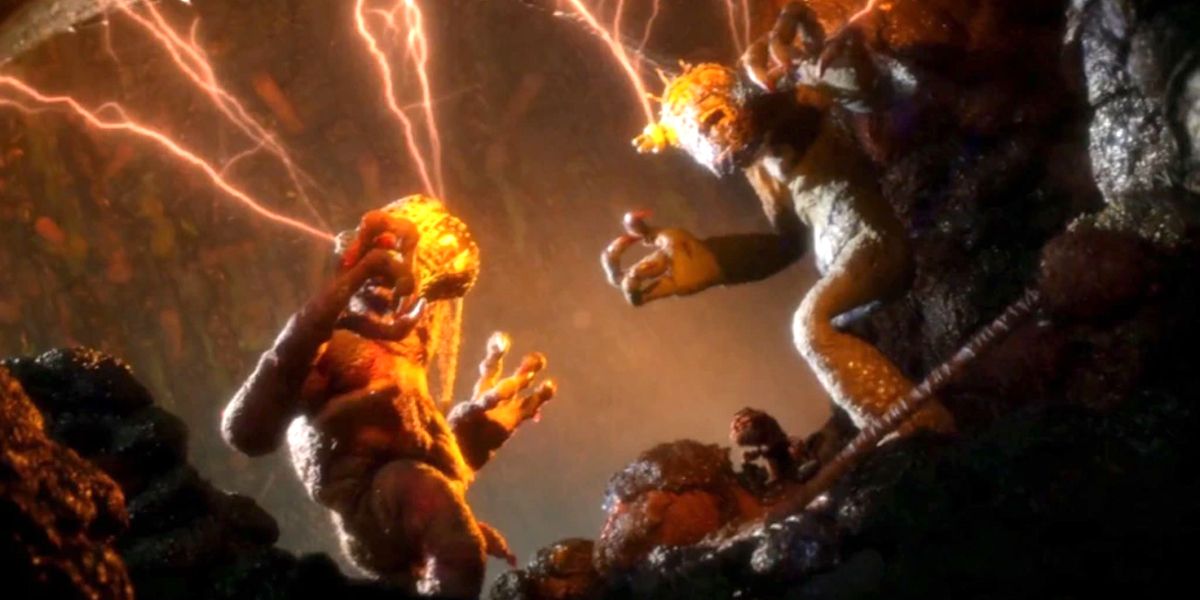The anarchic animated horror film Mad God, out Thursday on Shudder, has been in the works for more than 30 years. Yes, you read that right. According to the Kickstarter campaign that brought the potential of the film’s completion back into reality, there was the creation of “several minutes of stop-motion animation in 1990.” However, work soon ground to a halt as its creator began to work on other projects. Said creator is the Oscar Award-winner Phil Tippett who has been on the cutting edge of special effects and stop-motion animation for decades. He worked on iconic films like Jurassic Park plus both Star Wars: A New Hope and The Empire Strikes Back, honing his command of the craft with each new project he took on. Now, he has made something that is undeniably all his own.
Regrettably, when evaluating past similarly prolonged passion projects, the expectations we build for them tend to never be met by whatever ends up being finished. Mad God is a work that actually surpasses any ideas we have for it, making use of the technique of stop-motion animation unlike any other film out there. It won’t be everyone’s cup of tea, though its unrestrained technical accomplishments and the frightful vibrancy of the vision more than make it worth jumping headfirst into it. It merges so many techniques, tones, and styles to set you on edge while also drawing you into its enigmatic world. It makes for a simultaneously exuberant and dour work, bringing to life beautifully realized yet brutal stop-motion creatures that are intertwined with sublime miniature sets as well as creations that defy easy categorization. If you let it all wash over you, it is a quite magnificent journey into the macabre.
The story of the film is less a literal narrative than it is a visual tapestry of terror. What we see is a mysterious figure who makes their way deep into the horrors of the world below for a mission that remains largely unknown to us initially. Told with basically no dialogue, at least any that is in a language we can decipher, it is all communicated visually with a resolute confidence that introduces us to the cruelty of this existence. The world Tippett has created is a bleak one, feeling either like everything has been reduced to rubble after a war that ended existence as we knew it or the entirety of creation has fallen into the depths of hell. What is still alive has been reduced to an existence of suffering and depravity, something the film doesn’t shy away from showing in all its gruesome glory. Many aspects of this are rather gross, reveling in the disgusting with a frank focus that prevents us from looking away. It follows a dreamlike logic that is more akin to a nightmare you can’t wake up from.
This is precisely what the film is well-suited for as the techniques are all expertly done though still clearly artificial. It resembles reality while still containing a whole host of strange sequences. What Tippett has done with it creates a mesmerizing yet melancholic impact on the viewer. Whether it is when we see the closest thing we have to a protagonist be tortured until there is nothing left or the ethereal nature of the world itself continue to fall into chaos, it gets under your skin with just how striking it is. The manner in which Tippett uses stop-motion is not to make it seamless in order to hide the surreal nature of seeing objects move in such a stilted manner. Rather, he seeks to embrace it as part of its world. It creates a sense of both tragedy and triumph in the dark visions he brings forth, making it almost feel like the world is perpetually at war itself. Are we meant to celebrate a certain ritual or the accomplishment of a mission? Is the creation of something new hopeful or does it spell further disaster? Even one of the few sequences that are brightly colored quickly becomes far more menacing.
This sense of uncertainty and disorder becomes the most prevailing aspect of what Tippett has created. His world can be both ugly and captivating, though it is always a second away from upheaval. Destruction is only a heartbeat away, seen in the increasingly proximate mushroom cloud explosions that dominate the landscape. We are always on the cusp of a complete and total oblivion of our own making that will send us into darkness. One such scene comes when the film’s mysterious man makes his way through a desolate landscape on a rickety vehicle, completely alone save for the explosions off in the distance. This moment is particularly memorable as it sees Tibbett deploy all his techniques at once. Stop-motion, miniatures, and visual effects all come together to create a beautiful vision that still instills a sense of dread in just how barren it all is. We are invited to emphasize with the sole figure on screen, tracking his journey across the landscape and knowing he will likely perish anyways.
This is all part of what makes it a rather grim experience, though not excessively so. If anything, Tibbett finds a catharsis amidst the chaos. In a scene that can be read as the creation of the universe from the ashes, we see infinite potential explode outward in a kaleidoscopic burst of colors. While the destination that returns back to seems to again bring further destruction, an inevitable cycle of life and death, there is a sense that rebirth is possible in Tibbett’s imagination. It will be painful and soul-crushing, though we still see beings attempting to start again through the entirety of the experience. Of course, this is but one interpretation of the experience as there is no definitive way to make sense of such a dense work. Indeed, it is likely that everyone will take away their own understanding from the film. What will be universal is the awe at the vision of a great artist letting his mind run wild on screen. He has continually pushed himself as well as the form into new heights that we now get to see the culmination of, a multitude of techniques all coming together in one work. So is Tippett himself the Mad God of the film’s title? I would like to think so as this world is his creation that he poured his very soul into and made into the memorably mad one it is.











